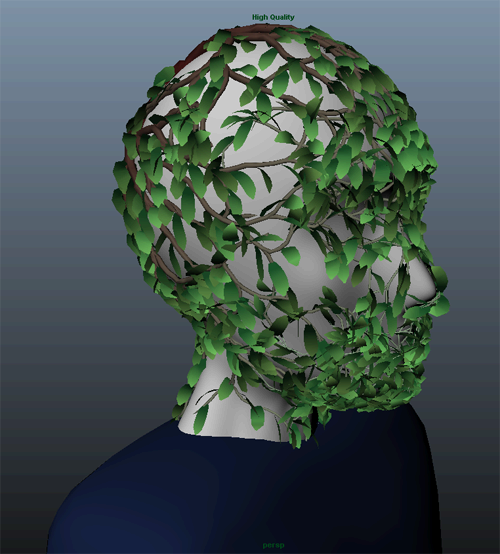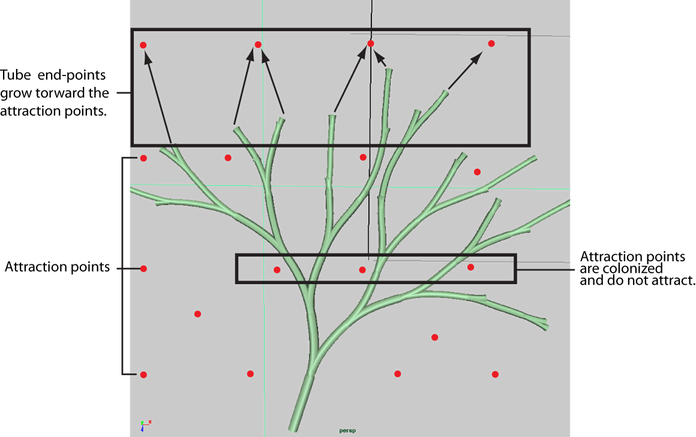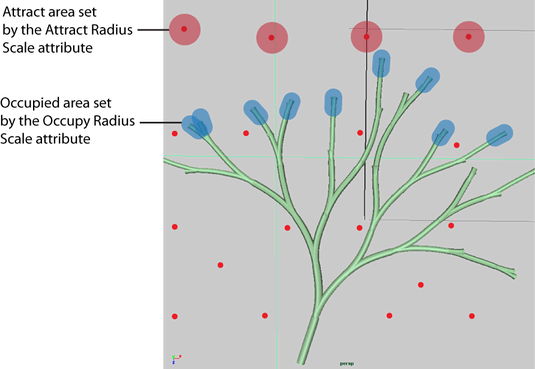
You can use Occupation Surface and Occupation Volume attributes to create arbitrary patterns in tubes which resemble dense bushes, intricate vine systems or the fine details of leaves and other biological shapes.
Occupation Surface and Occupation Volume attributes are based on a space colonization algorithm. Space colonization simulates the tendency of plants to seek unoccupied space to grow. After branches grow into an occupied space, other branches see it as colonized and do not try to grow into the space. Instead, they seek out other areas to grow.
To simulate space colonization in Paint Effects, points on the surface of painted objects (Occupation Surface) and inside Line Modifier shapes ( Occupation Volume) generate an attractive force called Occupy Attraction.
Occupy Attraction influences tube end-points of the stroke to grow toward the attraction point until a tube occupies the region around it. When a tube-end of a branch point reaches an attraction point, the point's attractive force is turned off. The point no longer attracts other tube-end points and is considered colonized by the branch.

Occupation Surface and Occupation Volume attributes, such as Attract Radius Scale and Occupy Radius Scale change how the force affects tube branch growth and size, as well as branching angle. For example, Attract Radius Scale specifies the area affected by the attractive force, while Occupy Radius Scale specifies the occupation area of tube-end points.

You can also create an Occupy Volume effect when you add geometry to a Line Modifier. See Line Modifier fill objects and Add a Line Modifier fill object.
 Except where otherwise noted, this work is licensed under a Creative Commons Attribution-NonCommercial-ShareAlike 3.0 Unported License
Except where otherwise noted, this work is licensed under a Creative Commons Attribution-NonCommercial-ShareAlike 3.0 Unported License